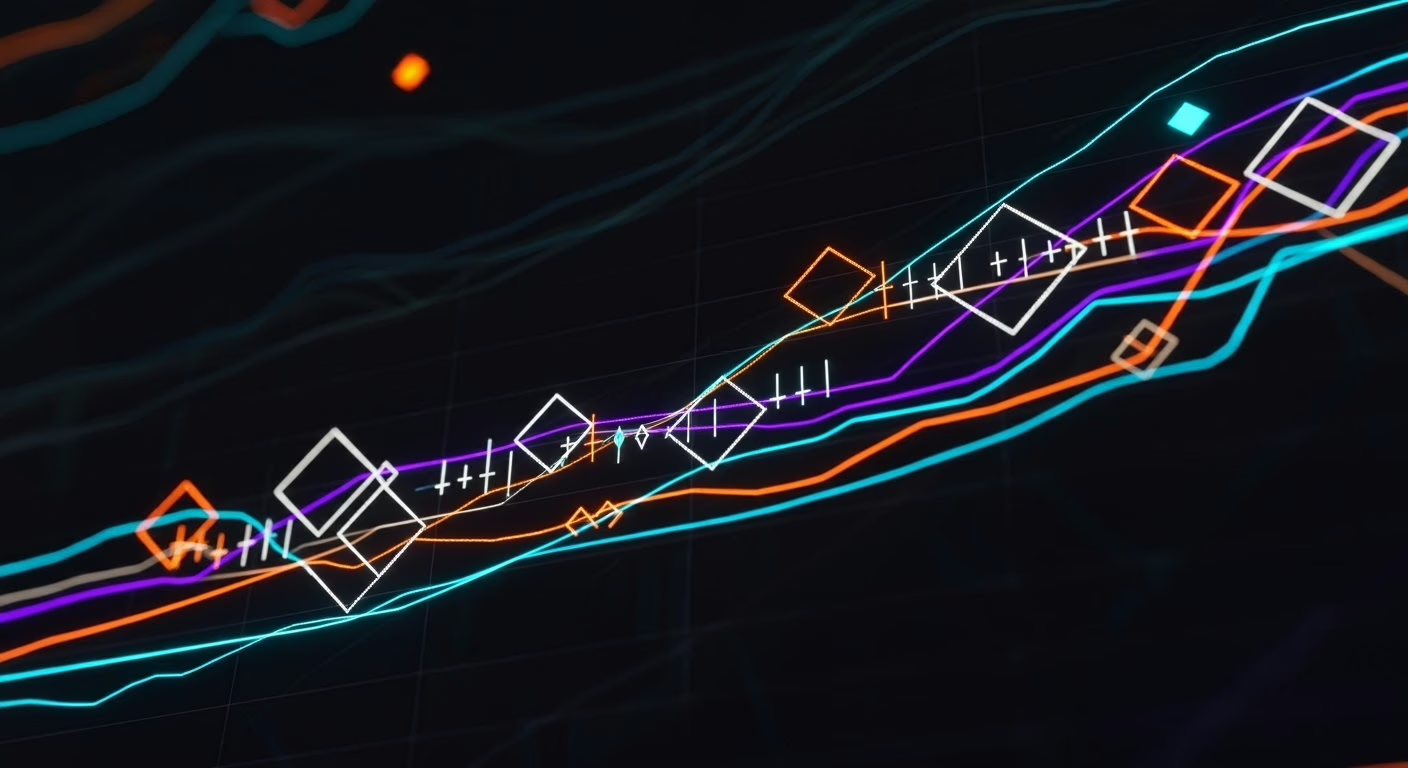Short-term trading is overwhelming. I get it.
All those numbers, charts, and jargon felt like a different language. Technical analysis sounds like super-complex algorithms and a PhD in math. Turns out, while it can be complex, the basics are quite approachable; it’s all about looking at past price movements and trading volumes to try and predict where things might head next.
Think of it this way: if a stock’s price has consistently bounced off a certain low point in the past, we might expect it to do so again. Or, if a stock is trending upwards with strong buying volume, you can feel more confident that the trend could continue. This is not a guaranteed way to figure out what a stock is going to do next, but it does give us a framework for making more informed decisions rather than just guessing.
The amazing thing is these methods can be used for more than just stocks; it can be applied to foreign exchange (forex) pairs, cryptocurrency and more.
So, What are the Core Ideas?
At it’s heart, technical analysis rests on a few key assumptions.
- The market discounts everything: This means that all known information – like company news, economic factors, and even global events – is already reflected in the stock’s current price. So, instead of digging through financial reports (that’s more fundamental analysis, a different beast!), you need to focus on the price action itself.
- Price moves in trends: Stock prices don’t just jump around randomly. They tend to move in patterns – upwards (an uptrend), downwards (a downtrend), or sideways (a range). Identifying these trends is a big part of technical analysis.
- History tends to repeat itself: This is a big one. Human psychology plays a significant role in the market. Because people often react similarly to similar situations, chart patterns that have appeared in the past are likely to appear again, and they often have similar outcomes. Many of these predictable patterns appear so frequently, probabilities can be assigned to the outcomes.
Essential Tools: Charts and Indicators 🛠️
So what are the tools of the trade, that is to say, how can you measure and possibly predict the investment’s price action?
-
Charts Types and Use:
- Line Charts: Super simple. They just connect the closing prices over a period. Great for a quick overview of the trend.
- Bar Charts: These show a bit more – the opening price, the closing price, and the high and low for the period. Each “bar” tells a mini-story of that trading session.
- Candlestick Charts: These are very informative and are similar to bar charts but visually more intuitive. The “body” of the candle shows the open and close, and “wicks” (or shadows) show the high and low. The color of the candle (often green for up and red for down) makes it easy to see price direction at a glance.
-
Support and Resistance:
- Support is like a floor. It’s a price level where a stock has trouble falling below. Think of it as a zone where buyers tend to step in.
- Resistance is like a ceiling. It’s a price level where a stock has trouble breaking above. This is where sellers often become more active. You can draw horizontal lines on charts to mark these levels. When a price breaks through a significant support or resistance level, it can signal a potential new trend.
-
Trendlines and Channels: If support and resistance are horizontal, trendlines are diagonal. You can draw them to connect a series of higher lows in an uptrend or lower highs in a downtrend. They help visualize the direction and strength of a trend. In addition, if you can find a parallel set of trendlines touching points of price action, they may signal a trading channel which is an incredibly powerful pattern.
-
Moving Averages (MAs): These are incredibly helpful for smoothing out price data to see the underlying trend more clearly. A moving average calculates the average price over a specific period (like 50 days or 200 days).
- When the price is above a key moving average, it can suggest bullish sentiment.
- When it’s below, it might indicate bearish sentiment.
- When a shorter-term MA crosses above a longer-term MA (like a 50-day MA crossing above a 200-day MA, often called a “golden cross”), some traders see it as a buy signal. The opposite, a “death cross,” can be a sell signal.
-
Volume: Volume tells us how many shares are being traded.
- If a stock price is rising on high volume, it suggests strong conviction behind the move.
- If it’s rising on low volume, you might be a bit more skeptical – the move might not have as much strength. You should always look at volume alongside price action.
-
Relative Strength Index (RSI): This is an example of an “oscillator” – an indicator that moves back and forth between two extremes. The RSI measures the speed and change of price movements. It ranges from 0 to 100.
- Generally, a reading above 70 is considered “overbought” (meaning the stock might be due for a pullback).
- A reading below 30 is considered “oversold” (meaning it might be due for a bounce). You can’t rely on these signals in isolation.
How I Approach It (and Some Things to Keep in Mind)
My advice? Start simple. Pick one or two indicators and really get to know how they behave with different stocks and in different market conditions.
It’s also super important to remember that technical analysis is more of an art than an exact science. What you see in a chart, might be interpreted differently by another trader. That’s okay! It’s about developing your eye and your strategy.
Here are some personal takeaways:
- No Guarantees: Technical analysis doesn’t predict the future with 100% certainty. Nothing does in the market. It’s about probabilities and risk management.
- Timeframes Matter: A pattern that looks significant on a daily chart might not even appear on a weekly or monthly chart. You must analyze multiple timeframes before making investment decisions.
- Combine Information: While pure technical analysts stick to charts, you should find it helpful to be aware of major news events, especially for longer-term trades. A surprise earnings report can throw any chart pattern out the window.
- Practice, Practice, Practice: The more charts you look at, the better you get at spotting patterns and understanding how indicators work. Many trading platforms offer “paper trading” accounts where you can practice with virtual money.
- Risk Management is Key: This is probably the most important lesson you’ll learn. Never risk more than you can afford to lose on a single trade. Technical analysis can help you identify potential entry and exit points, which is a big part of managing risk. For instance, you might set a stop-loss order just below a key support level.
The Ongoing Journey
The market is constantly evolving, and so are the strategies and tools traders use. But starting with the basics of technical analysis can give you a solid foundation and, more importantly, a way to approach trading with a plan rather than just emotion.
If you’re curious, I encourage you to dip your toes in. Start with understanding basic chart types, support and resistance, and maybe one or two simple indicators like moving averages. See how they relate to the price movements of stocks you’re interested in. It can be a really empowering way to engage with financial markets.





